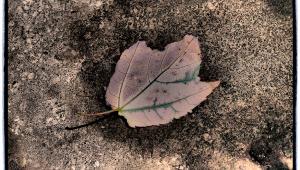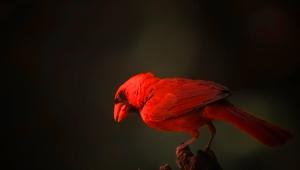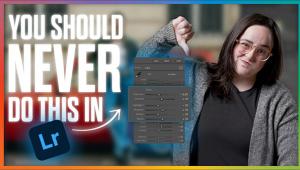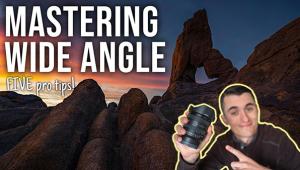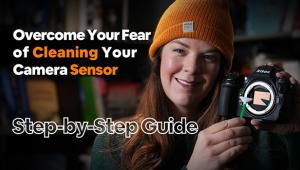Fujifilm’s FinePix S9000; A 9-Megapixel Superzoom Digicam With Low Light Bragging Rights
By now Shutterbug readers know that we call cameras with integral (non-interchangeable) lenses digicams. This is not meant as denigration but as differentiation from digital SLRs. And usually, due in part to the volume of models and in main because of their sameness, we usually hold off on any type of digicam review, feeling readers will not be that interested in more than a notice of their arrival. But we do make exceptions when we get hold of a digicam that is unique in styling, offers breakthrough technology, or might be a camera that could rival digital SLRs in features or allure. Such is the case with the Fujifilm FinePix S9000, a 9-megapixel model with an integral 10.7x optical zoom lens (with 2x digital if you really want to try it) and some interesting approaches to heightened sensor sensitivity and noise control.
 |
 |
The S9000 could fool you into thinking it is an SLR; indeed, when we first
handled it we looked for the lens release button. It does have some heft, but
more in handling than in weight, by which I mean you feel that you can steady
the grip, unlike some other digicams we've tried. Unlike digital SLRs,
it offers both viewfinder and monitor viewing, the former being EVF and the
latter being an articulated 1.8" LCD. The electronic viewfinder is pleasingly
sharp and avoids the unsharpness and burnout we've seen on other such
configurations. It does have a very slight delay in refreshing as you scan around
a scene, but again, not as disturbing as most. In addition, major functions
are displayed in the viewfinder so you don't have to switch to the monitor
view to change often used settings, a nice feature.
Fujifilm has made much of this camera's ability to handle low-light scenes,
and to do so with decreased levels of noise. The physics of noise is fairly
simple--when you apply extra gain across a sensor to add sensitivity you
increase the electronic chatter, or noise that can be generated. Think of it
as being an electronic "push" processing. Noise shows up as specks
of discoloration, particularly noticeable in shadow areas, which given that
you're working in low light you'll have plenty of in the scene.
The S9000 incorporates the company's Fifth Generation Super CCD-HR Sensor
(made by Fujifilm) and RP (Real Photo) Processor, which does the lion's
share of work in noise reduction by cycling the image information through two
rounds of noise cleaning.
 |
|
|
This is a camera that dares you to shoot in low light handheld, and offers an amazing ISO 1600 setting and a relatively fast f/2.8 zoom at the wider angle setting. The lens does go from f/2.8 to f/4.9, the latter being at the tele settings and pretty good for a compact 10x zoom. The actual focal length is 6.2-66.7mm, equivalent to 28-300mm in 35mm format, which means the sensor is 1/4 size (in relation to a 24x36mm film frame), smaller than the APS-C size you find on most digital SLRs. You might think that a smaller sensor makes sensitivity an issue, as packing 9 million plus photo sites (pixels) on a small sensor generally results in decreased sensitivity and fairly poor low-light performance. But the new CCD has a thinner structure than in the past, which results, we are told, in more efficient light gathering, a counterbalance to the pixel packing in this unit. The "native" ISO on this camera is 80, but you can vary it to 100, then in one-stop progressions to 1600. This not only increases sensitivity, but calls forth different algorithms for each speed, matched to optimize the image at each setting.
The S9000 has all the functions you could desire in a creative control camera, including the usual Exposure modes and metering patterns, some Scene modes, and numerous white balance options. The main options are accessed through a handy F (for Function) button that displays the file size and format options, ISO settings, and color/black and white settings. Interestingly, the color options include "standard" and "chrome" settings, something those who have never shot slide film will not quite understand (and more and more people are coming to photography having never shot film). The chrome setting, it turns out, is an automatic boost of sharpness and color saturation, understandable from the same company that brought us Velvia.
 |
|
|
The format options include Fujifilm's own Raw mode and a number of JPEG
file sizes. Interestingly, the only JPEG image size that offers a compression
option is the 9-megapixel choice, the others being straight up pixel count options.
I applaud this simplification of the file format options. In addition, the raw
file is 16 bit. The included Fujifilm Raw File Converter does just that--allows
you to convert from raw to TIFF. There are virtually no raw file parameters
that I could detect that you might use to adjust the image with the converter.
But it does yield a 16-bit 50MB file, and most adjustments will be done in Adobe's
Photoshop or Corel's Paint Shop Pro anyway. Normally, with a 9-megapixel
setting, you get a near 27MB file from an opened JPEG.
- Log in or register to post comments



